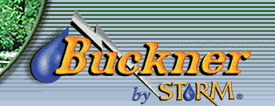Landscape Irrigation
Listed below are possible irrigation services and repairs that your system might need.
- Install new system, heads or rotors
- Repair or adjust heads, valves, rotors
- Move water lines or heads
- Adjust controllers or upgrade to electronic system from manual system
- Locate lost valve zones or repair cut electrical zone wires
- Repair broken water, lateral, or main lines
- Backflow testing
Installation Process
PHILLIPS LAWN SPRINKLER desires to do everything within our means to make the installation of your sprinkler system as painless and trouble free as possible. Before we begin the actual installation there may be city codes and permit regulations that we must meet. Photos of the installation process can be found at the bottom of this page.
Reasonable Expectations
Prior to the actual installation, you will notice utility flags and painted lines throughout your property.
Upon arrival of our PHILLIPS LAWN SPRINKLER personnel, you can expect clean, polite and courteous behavior for the duration of their time on the project.
The beginning of the installation will require a good deal of excavation and disruption of the existing turf and grade.
The installation area will be cleaned, and covered reasonably well at the end of each day.
At the end of the installation, final cleanup will leave all heads and valve boxes straight and plumb. Heads will be spaced approximately 3” from the curb, and the entire area should have ditch lines water settled, packed, and graded smooth. Excess soil and debris removed from the site.
The Installation Process
Utility locate requests are made approximately 3 to 5 days prior to starting the project.
An irrigation permit is acquired with the appropriate municipality.
Your PHILLIPS LAWN SPRINKLER sales professional flags the location of the sprinkler heads on the property by zone, with different colored flags.
The sales professional will introduce the homeowner to the project foreman.
The project foreman and the sales professional go over the system in order to assure that the foreman understands what is necessary to perform in accordance with the commitments that have been made.
The Phillips Lawn Sprinkler Company project foreman then begins the actual installation by uncovering the water line, at the point of connection. Utilities are marked along the expected ditch lines to help assure there is no damage. Every effort is made to avoid damage to the utility lines. Damage sometimes offers when soil is extremely hard, when lines have not been located properly, or utilities going to a neighbors property has not been located.
The ditching process is then implemented. This requires ditching throughout the area (an approximately 15’ grid for spray heads and 35’ grid for rotary heads). This is probably the most disruptive portion of the installation process and we attempt to only open up the portion of the project that we can reasonably expect to install and roughly cover by the end of the day. Some of the ditching considerations include radiating in toward large trees in order to parallel the root system for minimal damage.
In areas with established turf we ditch away from the backs of curbs or walks in order to leave established turf along the hard surfaces and minimize the affects of soil spillage. This also allows for speedier recovery of the turf because there are two edges from which the turf can recover.
The ditches are then cleaned out and final hand digging is performed.
Piping of the system begins and can be done in a variety of sequences, but the standard sequence is as follows:
- Installation of the backflow prevention device at the point of connection to the water supply.
- Piping of the main irrigation pressure line to each successive Irrigation control valve throughout the project.
- Installation of the irrigation control wiring, utilizing a 600V rated, UF, solid copper, direct burial approved wire (16 ga. min.). (Usually follows the main irrigation pressure line).
- Installation of the lateral irrigation lines from the valve to the sprinkler head locations.
- Standard recommended solvent welding (gluing) techniques are followed and the system is piped to keep water velocity at or below 5 feet per second through the piping system.
- Sprinkler heads are placed on the piping system, utilizing threaded fittings to facilitate removal and repair. Heads are set at the proper grade, perpendicular to the established grade and the soil is compacted around the head to secure the positioning.
- The soil is placed back into the ditches exercising care not to allow rocks or any other hard, sharp objects, that might damage the piping, to rest against it.
- Ditches are filled partially with water and packed firmly to compact the soil back into the ditches to prevent after settling of the soil.
- Ditch lines are cleaned, raked, and smoothed as close to the original condition as possible.
- Sprinkler heads are flushed with water from the sprinkler system to remove any soil or debris that may have been left in the piping.
- Proper nozzles and filters are installed to provide the proper arc and radius for the area.
- Irrigation control valves are wired into the irrigation controller and set up in a logical sequence to water in progression around the property.
- Final adjustment of the system is made. Attention is given to the direction and distance of throw for each head and keeping water from throwing directly onto windows and minimizing over spray.
- If the specific municipality requires and inspection of the backflow device we will arrange the inspection with the appropriate agency.
- Upon completion of the installation the Phillips Lawn Sprinkler sales professional will arrange a time to show you how to program the controller, the sequencing of the different stations, minor adjustment procedures, and how to turn off the water to the irrigation system in the event of a mainline leak.
- An Invoice for the proposal amount, reflecting any necessary changes that were made, will be presented for payment. PHILLIPS LAWN SPRINKLER is committed to excellence of the completed system and the satisfaction of our customers.
Suppliers
Phillips Lawn Sprinkler is proud to install top of the line products. An overview of each of our suppliers, Rainbird, Toro, Irritrol Systems, Hunter, Weathermatic, Nelson, and Buckner, and the products they manufacture are listed below. If you would like further information about our products please contact our office.




